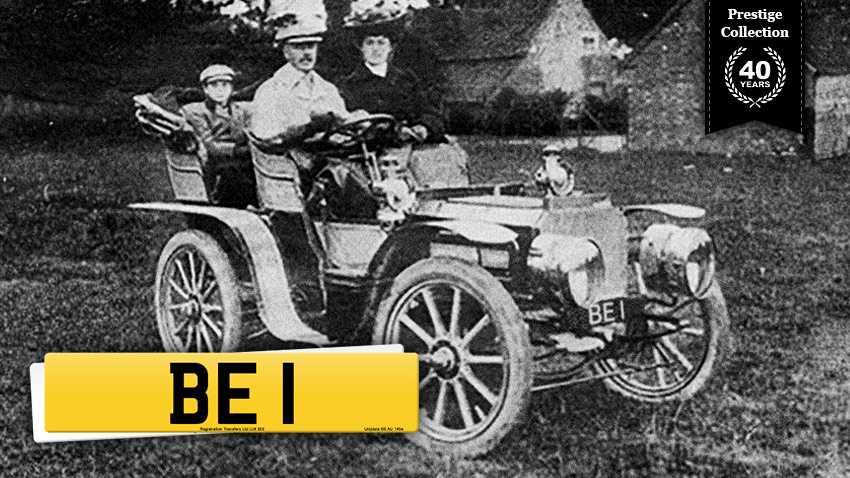
Regtransfers is proud to offer an exceptional cherished registration from our Prestige Collection. The antique mark BE 1 was originally issued in 1903.
Many registrations from this, the earliest period of UK car number plates, have been lost as old vehicles were written off or scrapped. The increasing scarcity of such numbers means that BE 1 is the only single-digit BE registration currently on the market.
The story of BE 1
The Motorcar Act, 1903, marked the birth of vehicle registrations in Britain. Section 3 of the Act required drivers of motor cars to be licensed from 1st January 1904. The task of issuing licences was delegated to the various local county and county borough councils.
BE 1 was originally issued in Gainsborough, Lincolnshire on 11th December 1903 by Lincolnshire (Lindsey) County Council. The first vehicle to display the number was a 1903 12 H.P. Siddeley belonging to a Mr John Drysdale Sandars. In later years, Mr Drysdale Sandars displayed the registration on a Peugeot, a De Dion Bouton and on his son's Bentley racing car.
Mr Drysdale Sandars was a barrister and a commissioned captain in the Lincoln Regiment of the British Army. Later he took over the running of his father's mercantile business, Messrs Sandars & Co. He became a deputy lieutenant of Lincolnshire in 1901 and High Sheriff in 1902.
John Drysdale Sandars also acquired brief notoriety as a motorist when, in 1903, he was charged with 'furiously driving a motor car'. For this heinous crime he was fined £5 by St Neots magistrates. When committing the offence, Mr Drysdale Sandars risked life and limb by pushing his car to a terrifying 26mph.
In recent years, the last vehicle to display BE 1 before it was retained was a black 2015 Cadillac Escalade.
BE 1 is available exclusively from Regtransfers.
Please follow the link for further details of BE 1.
Thanks to Nicholas Young and Gordon Tulley for images and information.
